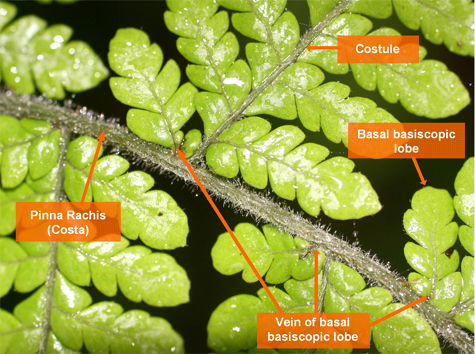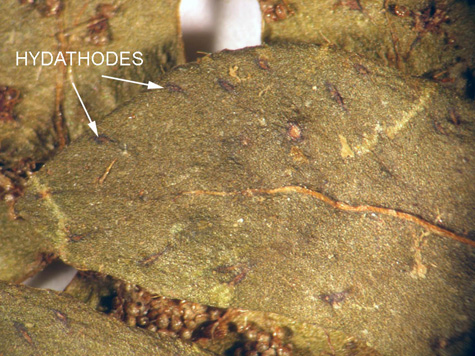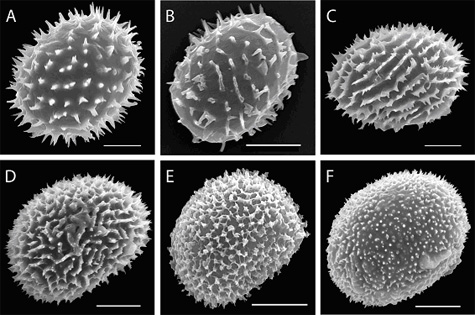Morphologically, Megalastrum can be distinguished by a subtle characteristic of venation and cutting (see picture). Toward the apices of the pinnae, the basal basiscopic lobes of the pinnules become adnate and decurrent on the costae (pinna rachises). The veins that supply these adnate and decurrent lobes spring from the costa (i.e., rachis of the pinna), not the costules. No other fern has this characteristic venation.

Characteristic venation of Megalastrum. Note how, the basal basiscopic lobe of the pinnule is adnate and decurrent on the costa. Correspondingly, the vein of this lobe springs from the costa, not the costule. No other fern genus has this venation.
Also distinctive of Megalastrum are veins that end in hydathodes (swollen tips) behind the margins (see picture).

Conspicuous hydathodes characterize Megalastrum. These structures are swollen vein tips that end before reaching the margin. They occur on the upper (adaxial) surface.
The spores of Megalastrum vary from echinate to cristate (see figure). As such they are quite different from those of Rumohra and Lastreopsis, the nearest outgroups.

Spore diversity in Megalastrum. A. M. pulverulentum (Costa Rica, Gómez 2268, NY). B.M. acrosorum (Costa Rica, Moran 3354, NY). C. M. atrogriseum, (Costa Rica, Mickel 2633, NY). D. M. grande (southeastern Brazil, Rosenstock s.n., NY). E. M. villosum(Jamaica, Underwood 3464, NY). F. M. lanuginosum (South Africa, Taylor 745, NY). Scale bars = 10 micrometers. Photos by Judith Garrison Hanks and Robbin Moran (more spore images available here)